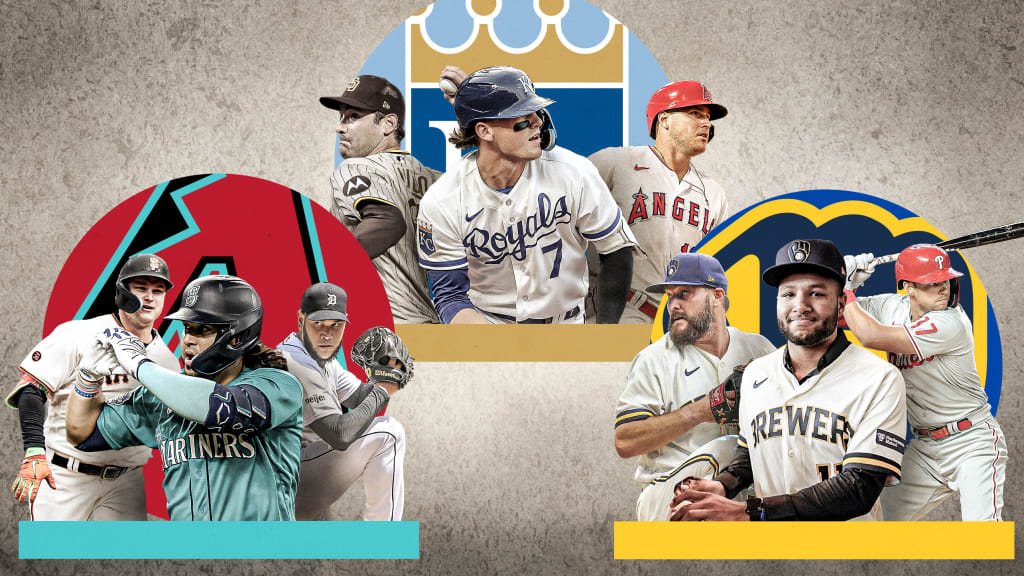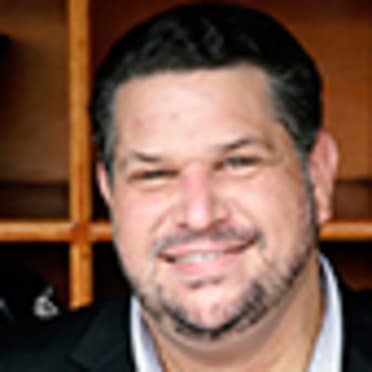
Yoshinobu Yamamoto's first bullpen session with the Dodgers drew a lot of attention, as did Shohei Ohtani's highly anticipated batting practice session, which saw him hit 10 balls out of the park in just 21 swings.
To say the Dodgers were the winners of the offseason might be obvious. But which other teams made moves that caught the attention of executives around the league?
We asked a number of front-office executives which teams had strong “under the radar” offseasons, and based on the responses, the defending NL champions might be ready to win their first NL West title since 2011.
Arizona received five votes, one of only three teams to draw multiple mentions along with Milwaukee and Kansas City. Eleven teams were cited overall for their offseason moves.
The D-backs acquired Eugenio Suárez in a late-November trade with the Mariners, re-signed Lourdes Gurriel Jr. (3 years, $42 million) and added free agents Eduardo Rodriguez (4 years, $80 million) and Joc Pederson (1 year, $12.5 million), addressing a number of needs with their moves.
“Nothing flashy,” one NL executive said. “But they made themselves better in multiple spots on solid deals.”
The D-backs still have a young core anchored by reigning NL Rookie of the Year Corbin Carroll, Ketel Marte, Christian Walker and Gabriel Moreno, while Rodriguez joins a rotation led by Zac Gallen and Merrill Kelly. After sneaking into the postseason with 84 wins -- and then making a memorable run to the World Series -- the D-backs have made moves with the intent of returning to October.
“I like what Arizona has done,” an AL executive said. “They got better in a few spots with Rodriguez and Joc, probably improved at third base with Suárez. I still think they might have one more move in them, as well.”
The Brewers -- who were swept by the D-backs in the Wild Card round last fall -- received three mentions from executives, even after trading Corbin Burnes to the Orioles for Joey Ortiz, DL Hall and a Draft pick on Feb. 1.
Milwaukee acquired Jake Bauers from the Yankees in mid-November, then brought back Wade Miley (1 year, $8.5 million) with a new deal. Last month, the Brewers added the power bat they had been seeking, signing Rhys Hoskins (2 years, $34 million) to play first base.
The move that some believe will pay off most was Milwaukee’s decision to give Jackson Chourio -- the game’s No. 2 prospect, according to MLB Pipeline -- an eight-year, $82 million extension, the largest in history for a player with no service time.
“If Chourio is as good as everybody thinks he’s going to be, this could be the contract that keeps the Brewers in contention into the next decade,” an AL exec said. “It’s tough to have to trade Burnes, but [Brewers GM Matt Arnold] got some good, young, controllable talent back.”
“They’ll still be a factor in the NL Central even without Burnes,” an NL executive said. “That’s a good team. Hoskins should help that lineup if he’s healthy.”
The Royals were lauded not only for their offseason acquisitions, which included Seth Lugo (3 years, $45 million), Michael Wacha (2 years, $32 million), Hunter Renfroe (2 years, $13 million), Chris Stratton (2 years, $8 million), Will Smith (1 year, $5 million), Adam Frazier (1 year, $4.5 million) and Garrett Hampson (1 year, $2 million), but also the decision to lock in star shortstop Bobby Witt Jr. to an 11-year, $288.7 million contract to keep the face of the franchise in Kansas City for years to come.
“Milwaukee and Kansas City both deserve credit for locking up Chourio and Witt,” an AL executive said.
The Phillies received a mention for bringing Aaron Nola back on a “reasonable deal,” signing their longtime ace to a seven-year, $172 million contract.
One NL executive cited the Yankees for their acquisitions of Alex Verdugo and Trent Grisham in trades and the signing of Marcus Stroman (2 years, $37 million), adding “and, oh right, they have Juan Soto now.” That same executive believes New York “could still get another starting pitcher” as well.
The Mets were one of the busiest clubs this winter, and while they didn’t make a big splash the way they had in recent years with the signings of Max Scherzer and Justin Verlander, they added 10 free agents on Major League deals -- nine of them on one-year contracts -- turning over 40 percent of the roster in the process.
“They successfully took a dramatically different approach than last year by jumping on lots of small deals that fit their roster well,” an AL executive said.
The Reds also had an active offseason, counting Jeimer Candelario (3 years, $45 million), Nick Martinez (2 years, $26 million), Frankie Montas (1 year, $16 million), Emilio Pagán (2 years, $16 million), and Brent Suter (1 year, $3 million) among their free-agent signings.
“I liked Cincinnati being willing to spend the way they have spent this winter,” one NL executive said. “They could sneak up on people a little bit. I like how they’ve handled their roster.”
The Pirates signed Aroldis Chapman ($10.5 million), Martín Pérez ($8 million), Andrew McCutchen ($5 million) and Rowdy Tellez ($3.2 million) to one-year deals, also acquiring Marco Gonzales via trade.
“They’ll probably get good returns at the Deadline for some of the guys they signed and traded for,” an NL executive said.
The Braves were also busy this winter, trading for Chris Sale, Jarred Kelenic, Aaron Bummer and Jackson Kowar, among others, while signing Reynaldo López (3 years, $30 million) and re-signing both Joe Jiménez (3 years, $26 million) and Pierce Johnson (2 years, $14.25 million).
“I like what Atlanta has done,” an NL executive said. “Johnson, Sale, Kelenic, López – they’re not big names or big contracts, but they added pieces around what is already a really good group.”
The Mariners were cited for their offseason trades, as president of baseball operations Jerry Dipoto seemed to be working the phones all winter. Seattle dealt Suárez to the D-backs in late-November, then sent Kelenic and Gonzales to the Braves less than two weeks later, adding four young, controllable players to the organization in the process.
In early January, Dipoto dealt Robbie Ray to the Giants for Anthony DeSclafani and Mitch Haniger, using DeSclafani as part of a four-player package to acquire Jorge Polanco from the Twins.
Tampa Bay was also mentioned for its trade of Tyler Glasnow and Manuel Margot to the Dodgers, which brought back right-hander Ryan Pepiot and outfielder Jonny DeLuca.
“[The Mariners, Rays and Brewers] all cleared some money and added future value without making their 2024 clubs demonstrably worse,” an NL executive said.
